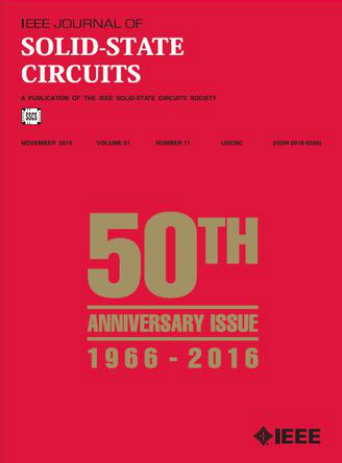A 2-GS/s Time-Interleaved ADC With Embedded Background Calibrations and a Novel Reference Buffer for Reduced Inter-Channel Crosstalk
IF 4.6
1区 工程技术
Q1 ENGINEERING, ELECTRICAL & ELECTRONIC
引用次数: 0
Abstract
Time-interleaved (TI) analog-to-digital converters (ADCs) are an established architecture, but fundamental problems still exist that prevent replicating the performance of each sub-ADC to the overall TI ADC. This article presents different techniques to overcome the main challenges in implementing an interleaved converter: 1) driving the ADC with sufficient linearity and bandwidth; 2) avoiding the crosstalk through the reference voltage; and 3) mitigating the effect of inter-channel mismatches. The proposed techniques are applied to a 2-GS/s TI ADC implemented in a TSMC 28-nm bulk CMOS process consisting of eight 11-bit 250-MS/s successive approximation register (SAR) ADCs. The prototype achieves a signal-to-noise plus distortion ratio (SNDR) and a spurious-free dynamic range (SFDR) of 57.3 dB and具有嵌入式背景校准和新型参考缓冲器的 2-GS/s 时交错 ADC,可降低通道间串扰
本文章由计算机程序翻译,如有差异,请以英文原文为准。
求助全文
约1分钟内获得全文
求助全文
来源期刊

IEEE Journal of Solid-state Circuits
工程技术-工程:电子与电气
CiteScore
11.00
自引率
20.40%
发文量
351
审稿时长
3-6 weeks
期刊介绍:
The IEEE Journal of Solid-State Circuits publishes papers each month in the broad area of solid-state circuits with particular emphasis on transistor-level design of integrated circuits. It also provides coverage of topics such as circuits modeling, technology, systems design, layout, and testing that relate directly to IC design. Integrated circuits and VLSI are of principal interest; material related to discrete circuit design is seldom published. Experimental verification is strongly encouraged.
 求助内容:
求助内容: 应助结果提醒方式:
应助结果提醒方式:


